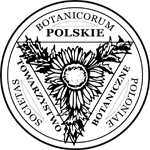Abstract
The investigations involved four species of the Cotoneaster genus: C. divaricatus, C. horizontalis, C. lucidus, C. praecox, which are commonly grown for decorative purposes. In Poland, these plants bloom in May and June and are a source of abundant spring nectar flow for insects. The floral nectaries of the above-mentioned species were examined using stereoscopic, light, and scanning electron microscopy in order to assess their size and epidermal microstructure. In the plants studied, the upper part of the hypanthium is lined by nectariferous tissue. The nectaries in the four species vary in terms of their sizes. Nectar is secreted onto the surface of the epidermis through anomocytic, slightly elongated or circular stomata. The largest stomata on the nectary epidermis were found in the flowers of C. horizontalis, and the smallest ones in C. divaricatus.Their size and location in relation to other epidermal cells were taxon-specific. The highest density of stomata in the nectary epidermis was found in C. divaricatus (205 per mm2), whereas C. horizontalis flowers exhibited the lowest (98 per mm2) stomatal density. The cuticular ornamentation on the nectary epidermis surface was diverse. The stomatal indices calculated for the nectary epidermis were considerably lower than for the leaves in the particular species.
Keywords
Cotoneaster; four species; nectaries; micromorphology; epidermis; stomatal index






